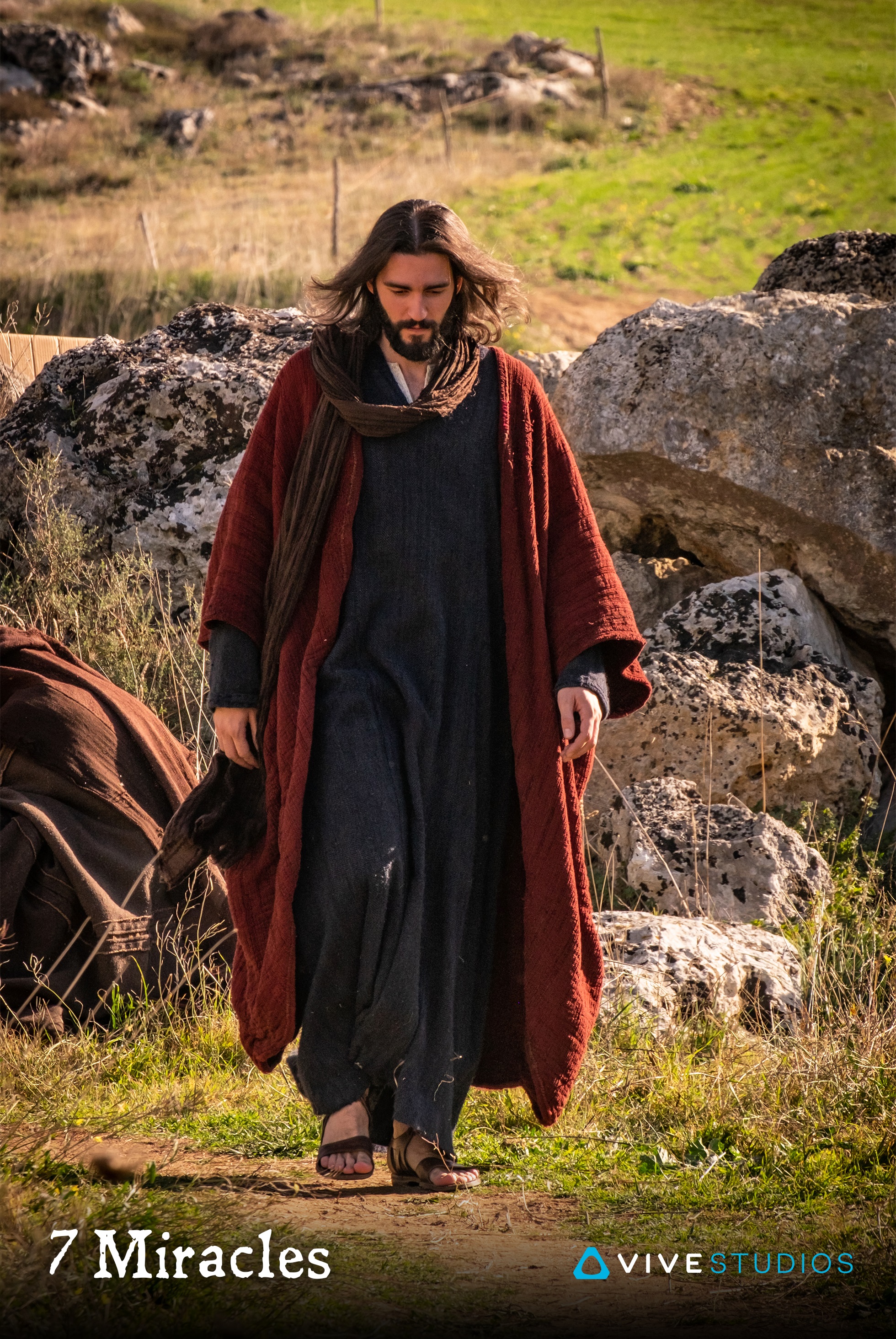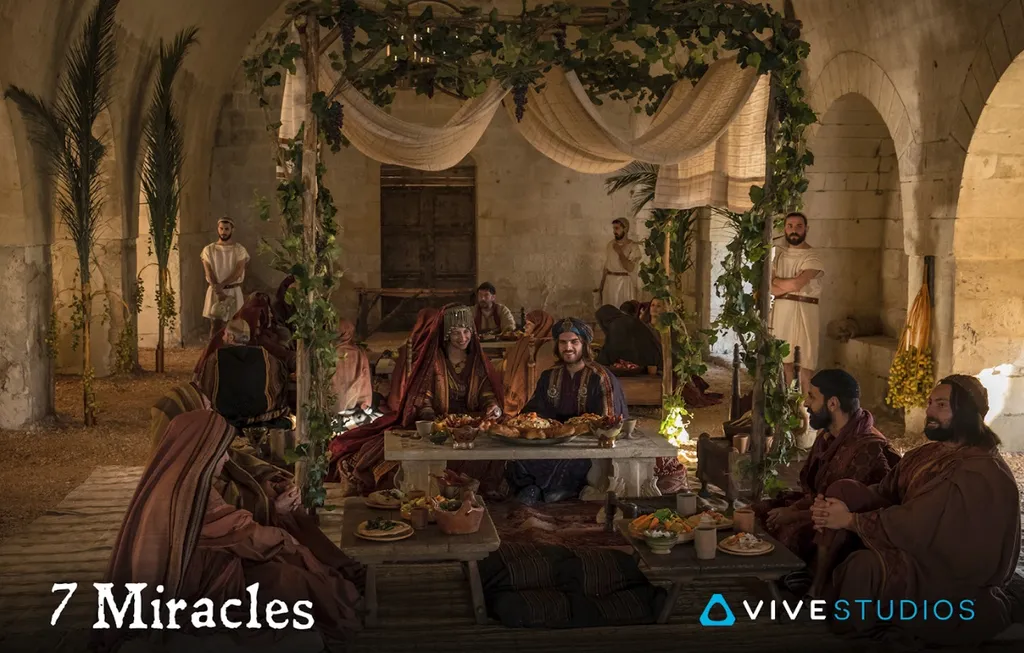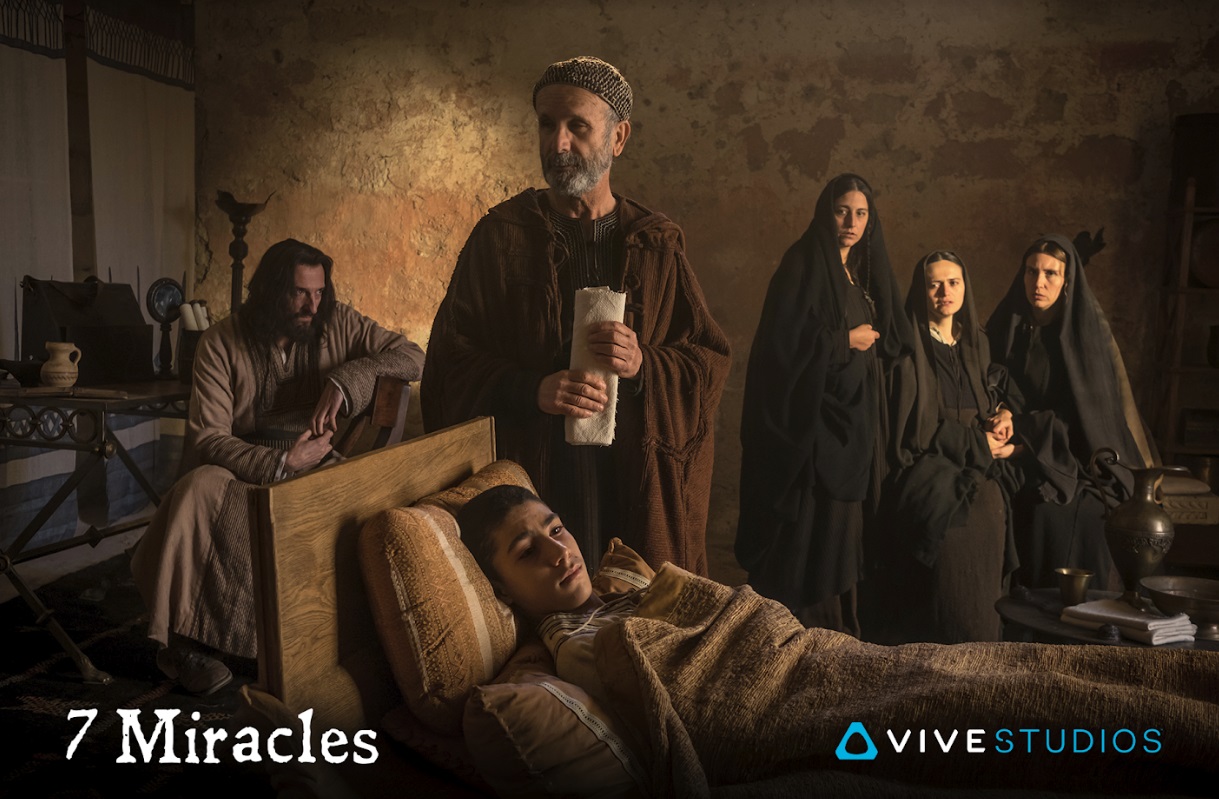If you’re reading this, JesuSavesSouls, this one’s for you.
I have to admit that, when I was first invited to watch a feature-length 360 degree movie about recounting the seven miracles of Jesus Christ, I hesitated. I confess it’s not a subject I have much interest in, nor has there been any 360 degree content yet published that’s so convincing I could spend over an hour watching it. Pairing the two didn’t exactly fill me with enthusiasm, then.
In truth, though, the end product isn’t quite the biblical endurance test I thought it would be, though it’s far from a miraculous achievement (sorry, I’ll stop those now).
Though billed as VR’s first feature-length piece, 7 Miracles actually arrives in an episodic format similar to other ‘movies’ like Nicolas Cage’s The Humanity Bureau. It consists of seven chapters, each lasting around 10 minutes and focusing on a different miracle. Odd as it may seem, I can see publisher Vive Studio’s thinking behind its support; there’s thought to be over two billion Christians in the world, why not push VR to them in the ongoing effort to popularize the tech? The result is what very much looks like a Sunday School lesson in VR, and that’s likely where this makes the most sense. It’s certainly in line with the specificity of Studio’s target audiences (which also include ocean conservationists and interior designers), if nothing else.
I was initially a little wary of 7 Miracles, though. The first episode, which recounts Jesus turning water into wine, doesn’t do much to validify its existence. It sees us join Jesus at a party, but it’s hard to shake the feeling that you’re simply watching a school production rather than really immersing yourself in an authentic recreation of the time and setting. Perhaps that’s just the experimental nature of the format itself shining through but the piece struggles to find much you’d call cinematic in its first ten minutes.
Subsequent episodes I was shown, however, fared far better than the introduction. The first, in which Jesus helps a man to walk again, is shot with a stunning backdrop of mountains in a city nestled between them. It lends the production a lot more weight, as does one particularly convincing scene in which a series of fast cuts have us trying to keep pace with Jesus as he angrily lectures those around him. It was here that I really got a sense of why this project should be in VR; there was unparalleled intimacy and communion to being part of the group huddled around him.

You continue to catch glimpses of that purpose throughout, including one scene in which Jesus resurrects Lazarus, though I couldn’t help feel like the piece ultimately wasn’t doing enough to elevate itself beyond traditional 2D footage. Tellingly, I watched the experience in a cinema seat, but never felt the need to uncomfortably crane my neck around to get the full scope of a shot. It is, at the very least, comprehensively put together, only occasionally revealing its stitching and exposing some directional audio mishaps.
Perhaps the most interesting side of the experience, though was a full VR rendition of the resurrection scene, captured using photogrammetry. The laser-scanned tomb was freely explorable in the standalone Vive Focus headset and both Jesus and Lazarus had been brought to life via performances captured with hundreds of cameras. Running on mobile hardware, the quality of the scans wasn’t on par with those I’d seen out of Dimension in London but I was told it could be scaled up for the PC version. It’s more of a taste of what’s possible rather than anything meaty, but it was proof enough to me that 360 content may be laying a foundation for a deeper, more immersive form of VR storytelling to come.
In this sense, 7 Miracles feels a bit like an unfinished puzzle, as if new and more exciting pieces were discovered mid-way through production that got the crew wanting to make a different picture entirely. It’s not likely to be something that has legs for home-based VR use but it could be a genuine tool to raise awareness of the platform, even if it might not fully convert anyone.

























